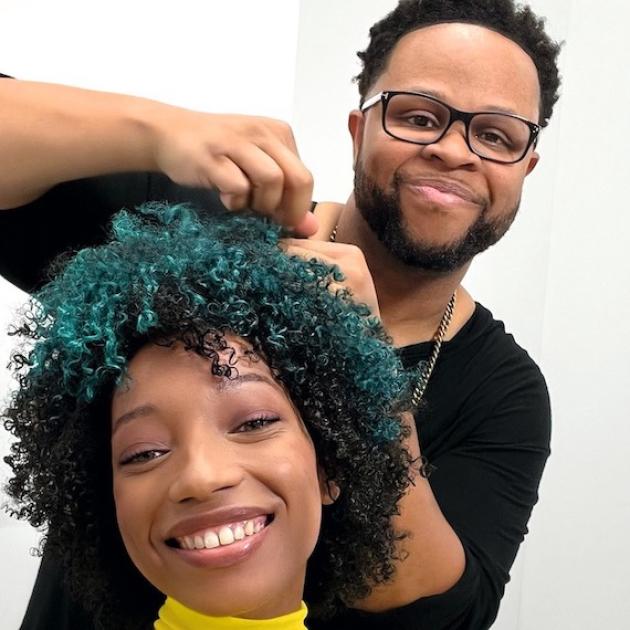5 Causes of Frizzy Curly Hair & How to Prevent Them
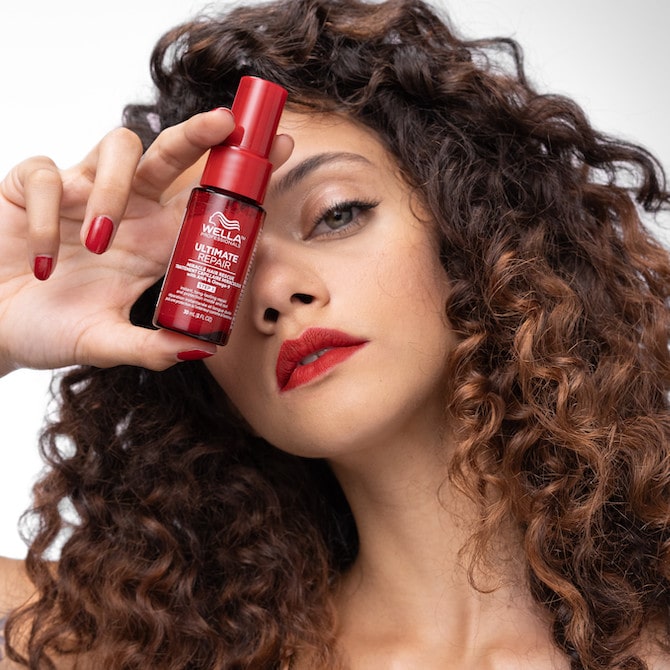
From straight to wavy to curly – all hair types and textures are prone to frizz, but they each require tailored care rituals to keep those pesky, stressed-out strands at bay. So, when it’s frizzy curly hair that you or (if you’re a hairdresser) your client might be dealing with, a definition-boosting routine is key. Here, we reveal the nine nourishing steps that keep curls strong, bouncy and free of flyaways…
What Causes Frizzy Curly Hair?
Nothing ruins curl definition quite like frizz and flyaways. But what causes hair to turn frizzy? It all comes down to the behavior of the hair’s outer layer, called the ‘hair cuticle’. When this cuticle becomes dry or damaged, or it’s ruffled by too much friction, it starts to rise and open, allowing moisture to enter the hair strand. Once in there, the moisture causes the hair shaft to swell, which gives curls that frizzy finish we’re all desperate to fix. And that leads us to the next question: what exactly is causing the hair cuticle to rise? Here are some of the key culprits…
1. Friction and Physical Stress
Whether it’s because hair is combed too much, tied up too tight, or the wrong pillowcase is being used (silk is best), physical damage could be leaving hair stressed and prone to frizz. Rubbing of the hair cuticle may cause it to rise, and it can also lead to hair breakage, which is when you’ll start to spot those telltale stray flyaways.
2. Dryness and Damage
Dry, damaged hair = frizzy hair. When strands are stripped of natural, protective oils, the hair cuticle is left vulnerable and can’t effectively lock frizz-inducing moisture out of the hair shaft. This can happen due to too much heat styling (with too little protection), chlorine damage, chemical damage or simply following the wrong hair care routine.
3. Misunderstanding Hair Types
Identifying your correct hair type isn’t always easy to do. You could think your hair is wavy – and style it as such – not realizing that it actually falls into the curly category. So, you might be following a wavy routine that doesn’t let curls live up to their full potential, resulting in a frizzy mane that needs a complete care regimen overhaul.
4. Environmental Factors
We don’t need to tell you that humidity is bad news for hair that’s prone to frizz. Even naturally sleek locks can turn wild and tricky to tame in the face of tropical temperatures. The more porous (and therefore absorbent) hair is, the more moisture it will take in from the air, so those with high porosity curls need a humidity-defying routine to maintain frizz-free locks.
5. Hot Water
When it comes to washing hair, water temperature can make all the difference to the finished look. Turn the tap too cold and strands won’t be cleaned effectively, but turn it up too hot and you can cause damage. Hot water is known to strip the hair cuticle of the essential oils it needs to stay healthy and hydrated, so lukewarm is always best for hair wash day.
So, How Do You Fix Frizzy Curly Hair?
1. Identify the Correct Hair Type
Shoutout to pros: if you’re a hairdresser, your first step to fighting frizz is to help your client understand their hair type. Do they think it’s straight when it’s actually wavy? Or are they working beachy waves when they have natural ringlets? One way to figure this out is to wet a section of hair during consultation, then let it air dry. As a general rule:
- If hair dries without any bend, it is type 1 straight hair.
- If hair dries with a bend or ‘S’ shape, it is type 2 wavy hair.
- If hair dries with defined ringlets, it is type 3 curly hair.
- If hair dries with tight curls, zags or spirals, it is type 4 coily hair.
If you’re assessing your own hair, you can also try this test on your next hair wash day. Give it a go, and you might just be surprised by the results.
2. Use a Reparative Shampoo and Conditioner
Too-harsh shampoos and conditioners can leave curls dry, stripped and frizzy, so it’s important to look for two key factors in these everyday hair care essentials. They should be:
- Compatible with wavy, curly or coily hair types.
- Nourishing enough to reduce frizz for ringlet definition.
Our go-to combination is ULTIMATE REPAIR Shampoo and ULTIMATE REPAIR Conditioner, an intensely reparative duo that’s suitable for all hair types – curls included. They’re each brimming with ingredients you’d usually find in the most sumptuous skincare, including AHA to rebuild strands internally, and Omega-9 to smooth the outer layer. Intensely hydrating yet lightweight, they can be used for every wash to moisturize hair from the inside out. Curls will appear bouncier, beautifully nourished and more defined from one shampoo to the next.
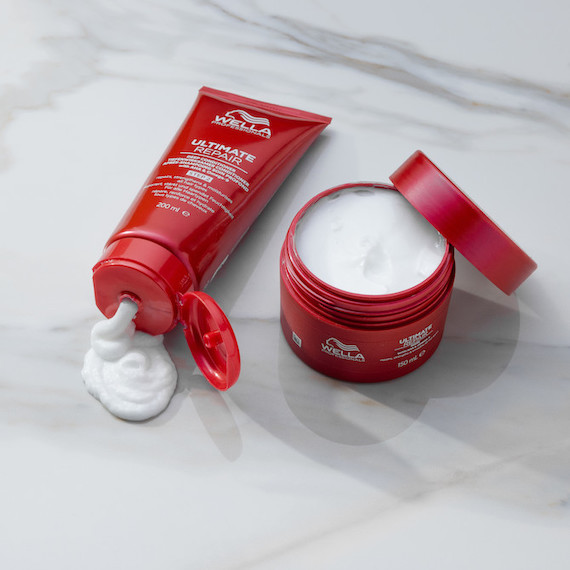
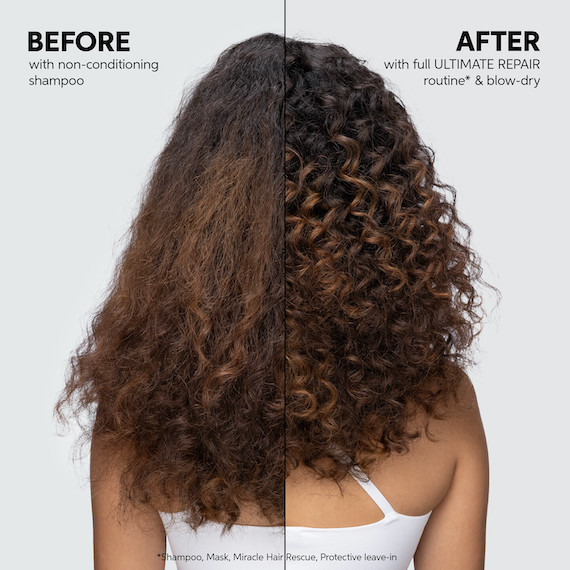
3. Moisturize with a Deep Repair Mask
No frizz-fighting routine should be without a deep conditioner. At least once per week, a hair masking session is a must to treat curls to an intense infusion of nourishment. The latest in conditioning technology is the ULTIMATE REPAIR Mask, a rich, creamy wonder treatment that harnesses adaptive technology for personalized repair.
Because hair tends to be unevenly damaged – and frizzier in some parts than others – ULTIMATE REPAIR Mask features adaptive conditioning agents that ‘detect’ and treat the areas in need of care. Meanwhile, all you or your client has to do is apply it to the mid-lengths and ends of clean, damp curls, allow it to absorb for 5-10 minutes, then rinse to reveal 6x smoother hair*. To enhance the effects, wrap locks up in a warm towel while the mask absorbs.
4. Detangle Curls in the Shower
Detangling curly hair is no mean feat. You want to work through all those knots, but one false move with the comb can disrupt the curl pattern and cause ringlets to separate. Cue – you guessed it – more frizz. So, try detangling curls while they’re wet, and with a conditioner or mask in the hair to provide much-needed slip. Then, knots can be eased out with fingertips or a wide tooth comb. Take care to work slowly in small sections so you don’t end up dragging delicate strands.
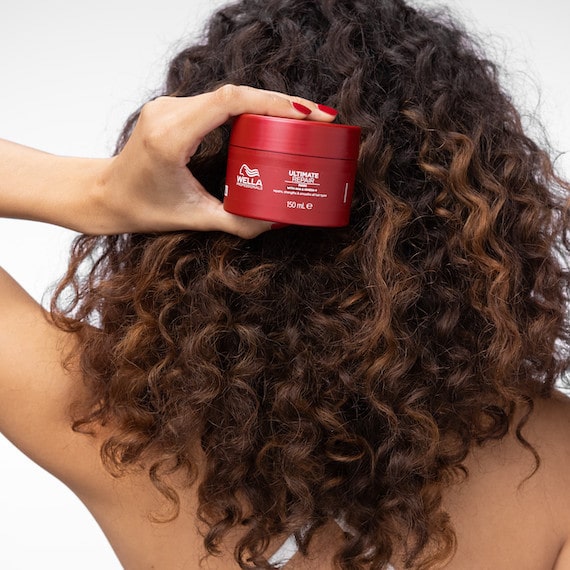
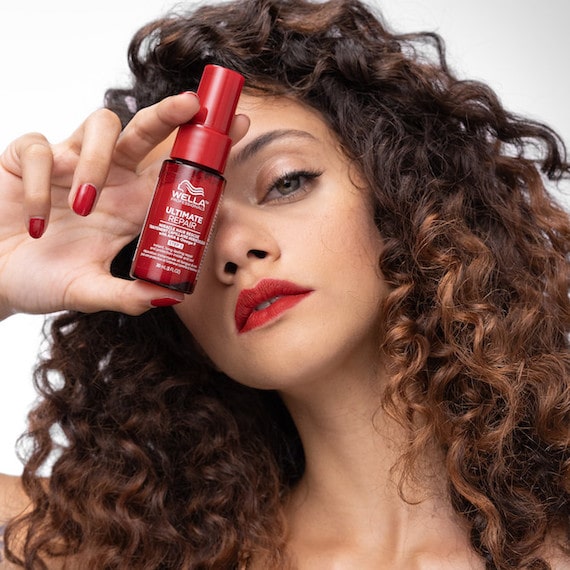
5. Dab and Blot Curly Hair Dry
Rubbing curls with a towel can ruffle up the hair cuticle, so it’s important to take a gentler approach to drying hair after washing. Instead, a microfiber towel or soft, cotton t-shirt should be used to gently blot out moisture. Press the fabric through the lengths of curls, so locks are perfectly prepped for styling.
6. Treat Hair to a Leave-In Treatment
After excess water has been blotted out of just-washed hair, it’s time to treat curls to a moisture-locking leave-in treatment. ULTIMATE REPAIR Miracle Hair Rescue repairs damage in just 90 seconds**, while leaving hair 12x smoother*** with 99% less breakage****. No wonder it’s hailed as one of the best anti-frizz products. Anyone with curly hair will love its frizz-fighting, shape-defining powers, as well as how easy it is to use. You simply need to mist it through clean, towel-dried hair, allow it to absorb for 90 seconds, then style as usual.
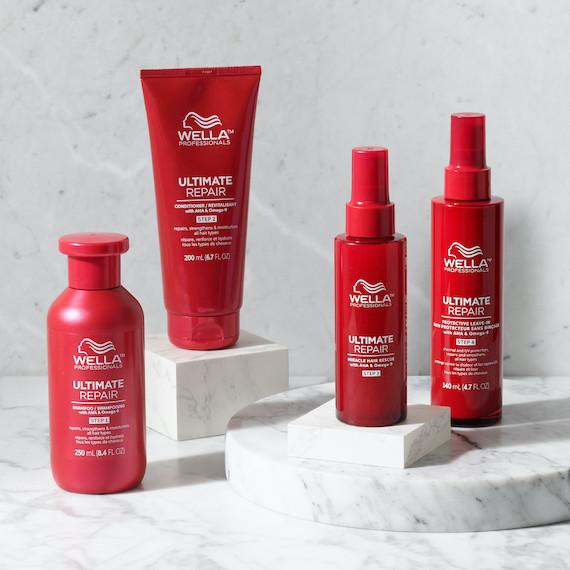
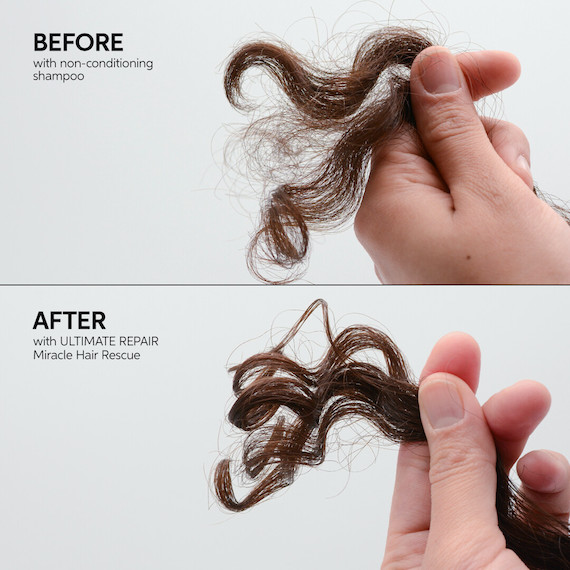
7. Avoid Heat Damaged Curly Hair
Heat damaged hair is one of the biggest causes of frizz and flyaways, but you or your client might be hesitant to pass up blow drying and styling curls. The good news is, you don’t have to. Using a supercharged protective lotion can save locks from all manner of sins, so damaged hair is reduced without having to hang up the curling iron. One of the best is the ULTIMATE REPAIR Protective Leave-In, a delicate cream-serum that protects, perfects and seals strands. Massaged into lengths and ends, it shields against heat up to 230°C/450°F, as well as breakage, UV exposure, mechanical damage and frizz. A true multi-tasker.
8. Shield Locks Against Humidity
Humidity and frizz go hand in hand. Once that damp air gets into curls, it can mean chaos, so lock it out with the help of a finishing spray. EIMI Glam Mist is our pick. Not only does it veil locks in glossy, healthy-looking shine, but it also safeguards hair against UV damage and, of course, humidity. Use it daily by misting it through dry, freshly styled curls and coils. It’s also great for on-the-go touch-ups to keep those mid-summer flyaways at bay.
9. Try the Cut & Seal Ritual
It goes without saying that trimming split ends frees locks from frizzy flyaways, but some of us with long hair need extra encouragement to embrace those regular cuts. That’s why we’ve introduced the Cut & Seal Ritual; a service that targets split ends while maintaining the length, so anyone growing out their hair can do so, and still keep it healthy and tidy.
The ritual starts with the subtlest cut. Hair is worked through section by section, and any split ends that stick out are lightly trimmed, so just the very tips are neatened. Next up, strands are treated to the full ULTIMATE REPAIR regimen, including the Shampoo, Conditioner or Mask, and Miracle Hair Rescue, followed by the Protective Leave-In Lotion and a blow dry. Then, once hair is dry, the length is corrected with one final trim. The result? Strong, supple, healthy-looking hair with fewer split ends in sight.
If you’re looking to try the Cut & Seal Ritual yourself, head to our Salon Finder, where you can discover your nearest Wella Professionals salon.
And if you’re a hairdresser, we hope these tips help you when advising your curly-haired clients on at-home care. Check out more of our hair care guides for tips you can share and also use yourself in the salon.
*When wet, vs. non-conditioning shampoo.
** When using ULTIMATE REPAIR Miracle Hair Rescue.
*** Vs. non-conditioning shampoo.
**** When using ULTIMATE REPAIR Miracle Hair Rescue. Instrumental test versus non-conditioning shampoo.



